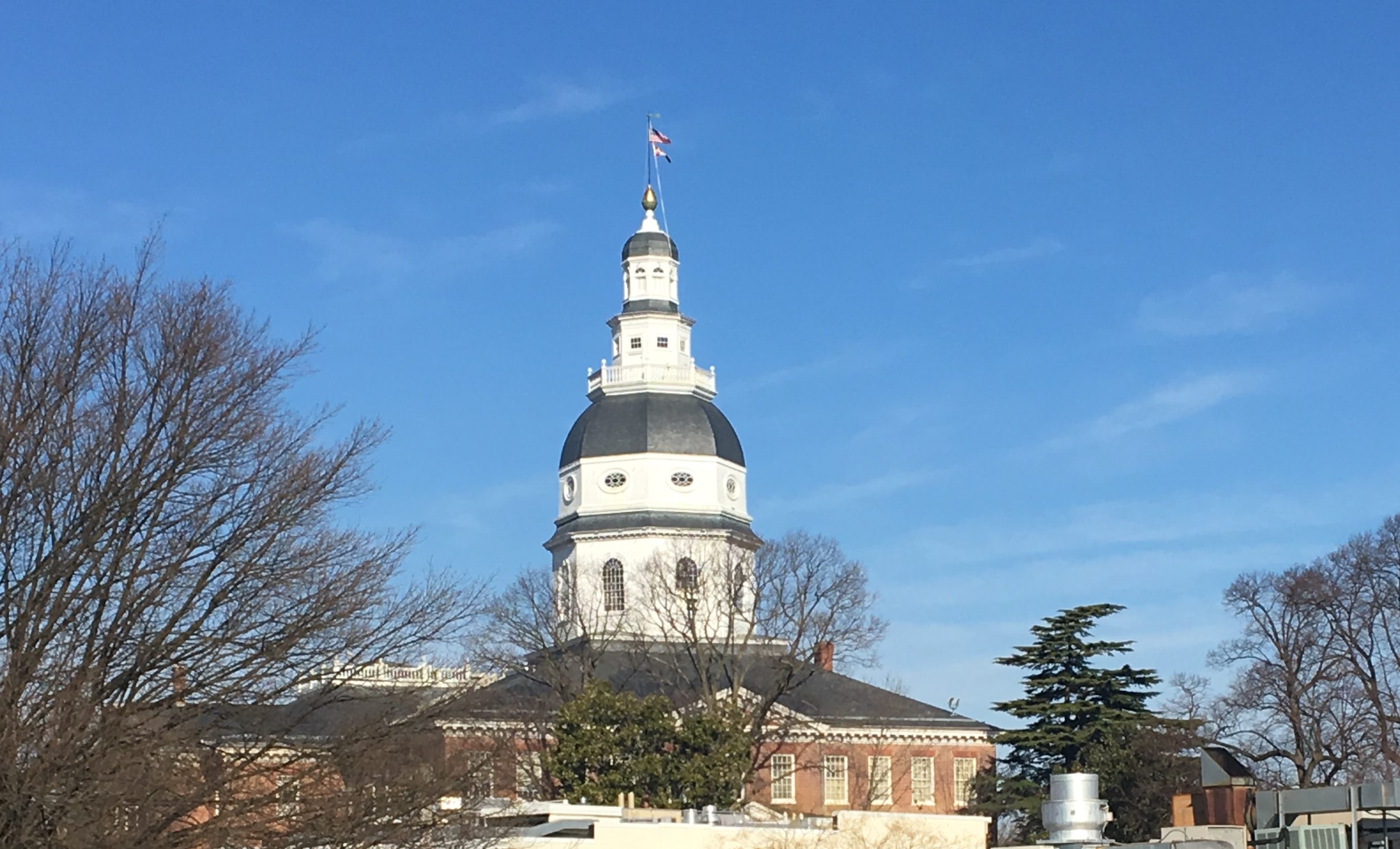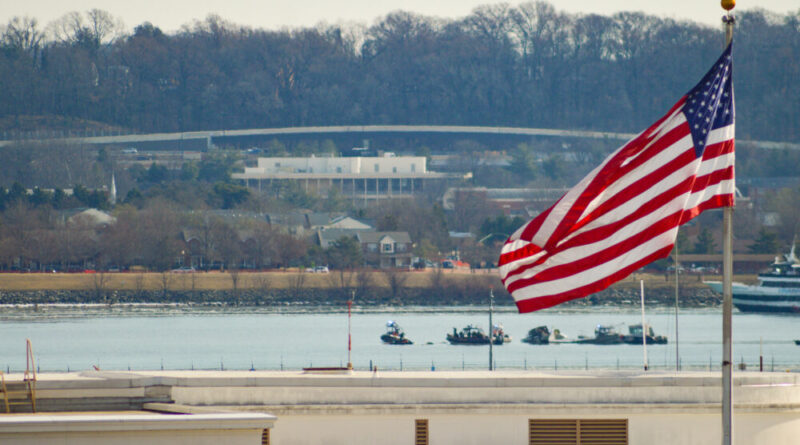Environmentalists worry what the plane-copter collision left in the Potomac River
By JESS DANINHIRSCH
WASHINGTON – Members of the Potomac Riverkeeper Network are concerned about the potential environmental impact on the river of the Jan. 29 collision between an American Airlines jet and a Black Hawk helicopter.
Various agencies involved in the response and investigation of the accident, which killed 67 people, so far have no plans for testing the Potomac for remaining traces of jet fuel and debris.
While the Potomac Riverkeeper Network could sample the water, the cost can be upwards of $600. Dean Naujoks, a decade-long member of the Riverkeeper Network, said that another volunteer from the organization collected water samples but froze them until the organization could get the funds to test it.
“In a perfect world, we’d have all the resources, and we’d have $10,000 set aside for something like this,” Naujoks said. “But, you know, we’re a non-profit organization, and we don’t, and so we’re just scrambling trying to get free help anywhere we possibly could for the sampling.”
The amount of fuel that spilled from the two aircraft has not been made public. Once it is, organizations such as the Potomac Riverkeeper Network could use the existing models and maps of the river to pinpoint locations in the river where the water still might contain contaminants.
The CRJ700, the type of jet involved in the accident, has a maximum fuel capacity of 2,925 gallons. The American jet had been moments from completing its roughly two-hour-and-forty-minute flight from Wichita at the time of the accident. The Black Hawk helicopter, also known as a Sikorsky UH-60, has a fuel capacity of 360 gallons.
Naujoks was one of the first people to respond to the crash. With permission from the FBI, Naujoks waded downriver from the crash the day after the accident to assess the spread of contaminants visible on the water’s surface.
“It was an intense situation to deal with,” Naujoks said. “It was nerve-wracking being out there, and it was just a sad – probably saddest day ever on the Potomac River.”
Naujoks spoke about his experiences in a webinar session by the Riverkeeper Network as a part of its “Water Wednesdays” series. He said he wanted to ‘clear the air’ about why he was allowed to search the site so soon after the crash and what he did there. Due to Naujoks’ keen knowledge of the river, he was a key resource for first responders and received permission to be near the site.
In the webinar, Naujoks said he felt “obligated” to search in areas where boats do not typically navigate, such as Smoots Cove and Oxon Cove, because the first responders did not go there immediately.
The last pieces of the wreckage were removed a week after the accident, but Naujoks worried that there could still be jet fuel, residue of other chemicals, and debris in and along the nearby shoreline of the Potomac. He suspected that heavier parts of the fuel may have sunk into the river.
Weston Slaughter, a Ph.D student at the University of Maryland in the Department of Geology, had a similar suspicion. Slaughter, who works in the biogeochemistry lab under Dr. Sujay Kaushal, works on the Potomac River frequently, conducting organic carbon analysis.
Slaughter visited the crash site two days after the incident, and he visited it again two weeks later to study the sediment. On his second visit, he said he saw yellow insulation foam from the plane still remaining in the water.
“When this happened, it felt like it was really important to sample (the water). If we didn’t have the samples then, then we definitely would not have been able to see what was going on,” Slaughter said. “Since then, we’ve been working on figuring out, are some of the instruments that we have capable of detecting specifically a signature jet fuel versus other carbon compounds?”
It rained on the day he set out to explore the area, two days after the crash. He theorized that the precipitation could have spread remaining jet fuel compounds to other areas of the watershed, potentially prolonging the compounds’ residence time in the water.
Slaughter believes that this incident highlighted the importance of rapid responses to collect scientific information and comprehensive data to be shared with the public for the greater benefit of public health.
“From a public health and environmental health consideration, that does deserve that attention,” Slaughter said. “I feel like the lack of overall capacity for there to have been a definitive scientific response to an event like this, to be able to attempt to quantify the contaminant and the exposure risk…It does seem like the kind of thing that it would be good for us to be, as a society, prepared to respond to in like in a timely fashion for protecting people.”
Even if there is no long-term cause for concern, Slaughter believes that it is important for organizations and labs to continue researching long-term effects, monitoring sediments, and keeping an eye on water quality because that insight could be helpful for public health in the future.
Christopher Overcash, adjunct professor and program manager in the Department of Environmental Health and Engineering in the Whiting School of Engineering at Johns Hopkins University, echoed Slaughter’s concerns.
“There are remnants of jet fuel that are water soluble, containing xylene and ethylbenzene that are toxic to aquatic life, so while the material is in there, it could certainly still impact the fish and other aquatic organisms,” Overcash said. “(The) way that it could have an environmental impact would be sediment contamination, and that would rely on there being suspended sediment in the river…and lead to localized contamination on the bottom of the river.”
Overcash, who is an expert on the dynamics and flow of the river system, emphasized that while it is unlikely that there are still contaminants in the water, the importance of testing it for both confirmation purposes and for future use and research should not be overlooked.
When asked whether or not he thought testing should happen, Overcash said, “I think it should to get ultimate confirmationand I would also say not just testing of the water column itself at the location, but also potentially some sediment samples near where they removed the aircraft debris.”
The National Transportation Safety Board (NTSB) is currently investigating the probable cause of the crash, and it will likely be able to report the amount of jet fuel that was in the plane and the helicopter in its final report, according to NTSB chief of media relations Eric Weiss.
The D.C. Department of Energy & Environment (DOEE) said that it had no plans to sample the water, unless requested by the U.S. Coast Guard.
The Coast Guard also did not sample the water, nor did any other agency involved in the cleanup process. Micheal Rhue, a marine science technician for the Coast Guard, said that if the spillage had been oil or diesel fuel, there would have been more cause for concern because those materials do not dissolve as easily as jet fuel. Rhue said that most of the jet fuel evaporated after the first day.
Additionally, the Coast Guard often samples water when there is a spill from which the source is unknown. Because it is known that the jet fuel came from the plane crash, Rhue said, the testing was unnecessary.
Jay Apperson, the communications director of the Maryland Department of the Environment, said that fuel leakage was the primary environmental concern. Apperson said that when exposed to air, the jet fuel becomes volatile and evaporates from the water quickly.
The plane crash occurred close to the Anacostia River and the Washington Channel, both of which feed into the Potomac River.
Naujoks said he found wreckage debris and smelled the jet fuel the day after the accident farther south of the crash site: around the Woodrow Wilson Bridge and in Oxon Cove, all the way downriver to National Harbor.
The Maryland Department of the Environment’s jurisdiction ends north of the Woodrow Wilson Bridge, so that is where the agency halted its search for any debris or fuel. The department was in a support role during the cleanup process, according to Apperson.
The Interstate Commission on the Potomac River Basin (ICPRB) does not give a definitive answer on whether or not it is safe to swim in the river, although the Potomac and Anacostia Riverkeepers regularly update the bacteria levels. Despite this, the river is regularly used recreationally, and the Potomac Riverkeeper Network had been planning its annual Polar Bear Plunge at National Harbor on Feb. 10.
After the accident, the organization rescheduled the event and converted it to a virtual event.
“I became increasingly concerned about if that event was going to happen, if three hundred people (were) going in the river, not only does it not look good in light of the tragedy, but we had real concerns about what that might mean for water quality and overall public health,” Naujoks said.
About five million people get their drinking water from the Potomac River. Renee Bourassa, communications director at ICPRB, said that the commission was not involved in the accident cleanup process, as its main concern would have been about the drinking water sources. The crash occurred in an area downstream of the primary drinking water intake sites at Great Falls and Little Falls.
According to the Potomac Conservancy Report Card, the primary source of pollution in the Potomac River is urban runoff, which is one of the leading causes of pollution in the United States.
Not much is known about the long-term effects of jet fuel exposure, according to the U.S. Department of Veterans Affairs, but short-term effects include skin irritation and respiratory issues.
CNS Washington reporter Jade Tran contributed to this story.

Capital News Service is a student-powered news organization run by the University of Maryland Philip Merrill College of Journalism. With bureaus in Annapolis and Washington run by professional journalists with decades of experience, they deliver news in multiple formats via partner news organizations and a destination Website.

